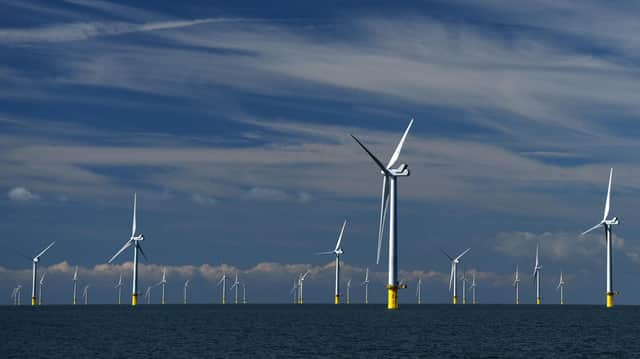We need to increase the scale of our ambitions on green energy - Christoph Harwood, Adrian de Andres and Nichola Lacey


That is demonstrably true of the reliance now placed on floating offshore wind, key to delivering the UK’s Net Zero targets. Given existing projects only comprise of a handful of MW scale demonstrators, there is a steep climb towards what floating wind is expected to deliver by 2030 – 1 GW – and we need medium scale stepping-stone projects to put us on the right path.
As suitable fixed sites become scarce and floating technology evolves, the latter becomes the right solution to further extract energy from our windy seas. The UK government has recognised this by enabling stepping stone projects, not just to develop the technology and iron out challenges, but also enable the building of a prepared supply chain so that when the big projects come along towards the end of the decade, the UK benefits in terms of jobs and economic development. We must not lose out again.
Advertisement
Hide AdAdvertisement
Hide AdSalamander is a stepping-stone project, to be located off the Aberdeenshire coast. It aims to provide an intermediate link between existing small demonstration units and future arrays on the very large scale envisaged. Its immediate goal will be to provide a platform for the supply chain to invest and learn-by-doing, thus gearing up for future opportunities.
No single technology will deliver Net Zero but some, such as green hydrogen, will be fundamental to the journey. Just last month a Hydrogen Strategy published by the UK Government highlighted it as a key tool on the road to decarbonisation.
Salamander will incorporate hydrogen technology, thus serving as a stepping-stone for both floating wind and green hydrogen production. This could be a world first, significantly contributing to a buoyant green hydrogen industry in Scotland.
The recent publication from Marine Scotland - setting out areas for future offshore wind developments - is welcome. However, the plan excludes green hydrogen from progressing via the decarbonisation route, and projects larger than 100MW – it’s a 300MW limit in England and Wales – from progressing via the innovation route; making the way forward much more challenging.
With COP26 approaching, Salamander offers our governments a way to show the world that we are true leaders in decarbonisation with a credible path to Net Zero and a just transition. To achieve this, we need to increase the scale of our ambition and enable Scotland’s offshore wind and green hydrogen sectors to progress together.
Adrian de Andres, Nichola Lacey and Christoph Harwood, Simply Blue Energy
Comments
Want to join the conversation? Please or to comment on this article.